In my post in the Cycling section describing my visit to the island of São Tomé, part of the nation of São Tomé and Principe, I presented a handful of reasons why I chose to add that location to my revised Tour plans. Of course, the most important reason overall was that the two main islands, São Tomé and Principe, contain an excellent ensemble of endemic birds, a number of which are decidedly rare. Depending on which taxonomy is currently in favor, the two islands are home to around twenty-five birds found nowhere else. That quantity of endemics rivals the more famous Galapagos Islands of the Eastern Pacific, but over a notably smaller area. However, in contrast to the Ecuadorian archipelago, whose islands are often dry, with a thinner, arid-adapted flora, the thick forest cover of these islands makes their birds significantly more difficult to observe. Additionally, here there are no obvious families, or other groups of birds, that display clearly visible adaptations to variations in their environments or ecological niches. Therefore, it is probably fortunate the H.M.S. Beagle chose to linger around the Galapagos, instead of making a visit to São Tomé and Principe. For if it did call at these lovely African islands Mr. C. Darwin may not have been able to gather enough important observations to formulate his groundbreaking idea. I, on the other hand, am not in the process of revolutionizing our understanding of Earth’s ecosphere, so I was happy to simply appreciate the birds of São Tomé just because they are there.
My intentions initially were to make a concerted effort to see all of the endemics, plus anything else that might be around. However, as I have already described, difficulties obtaining cash on the island caused major disruptions to my plans. The most important of which was that I was not able to visit Principe Island, which eliminated the possibility of five endemics right from the start. Additionally, it is said by those with significant experience birding on these islands that several of the more rare endemics require considerable effort and patience to observe in their damp forest homes. With my suddenly-tight schedule, I really only had time to make one pass through each of the best locations, and hope for the best. I chose to focus my efforts at three well known birding locations, the semi-agricultural lands of the north shore of the island, the high-elevation trails above the Bom Sucesso Botanical Gardens in the center of the island, and the wet forests of Obo National Park in the extreme southeast. For the final site a guide was required, since access was quite difficult, and I was accompanied by Laudino Tavares, an energetic young man who plans on opening his own Tour Agency in the future. In the end, I tallied nineteen Life Birds on São Tomé, fourteen of which were endemic to the country, and, given the circumstances, I was certainly pleased with that.
A handful of resident species are more widespread, also being found around parts of the African mainland, such as Southern Cordonbleau, Chestnut-Winged Starling, and Southern Masked-Weaver. Fleeting observations were also made of Harlequin Quail, São Tomé Spinetail, and African Emerald Cuckoo. The latter species was one that I have definitely wanted to see for several years, but will still need to look for, because that particular sighting was not very satisfying.
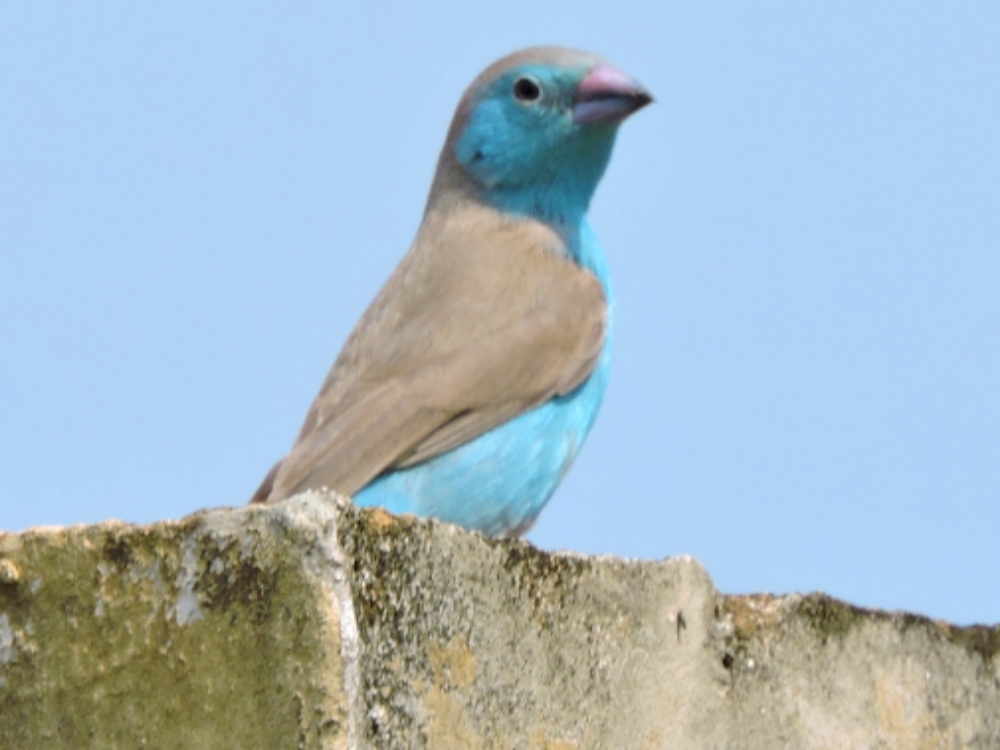
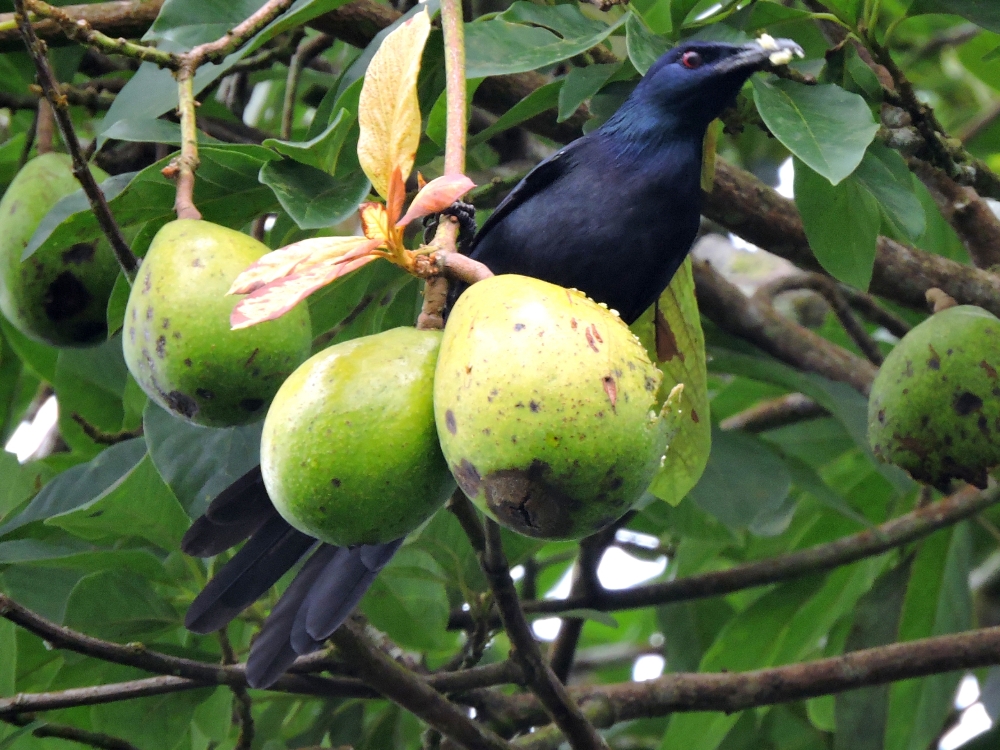
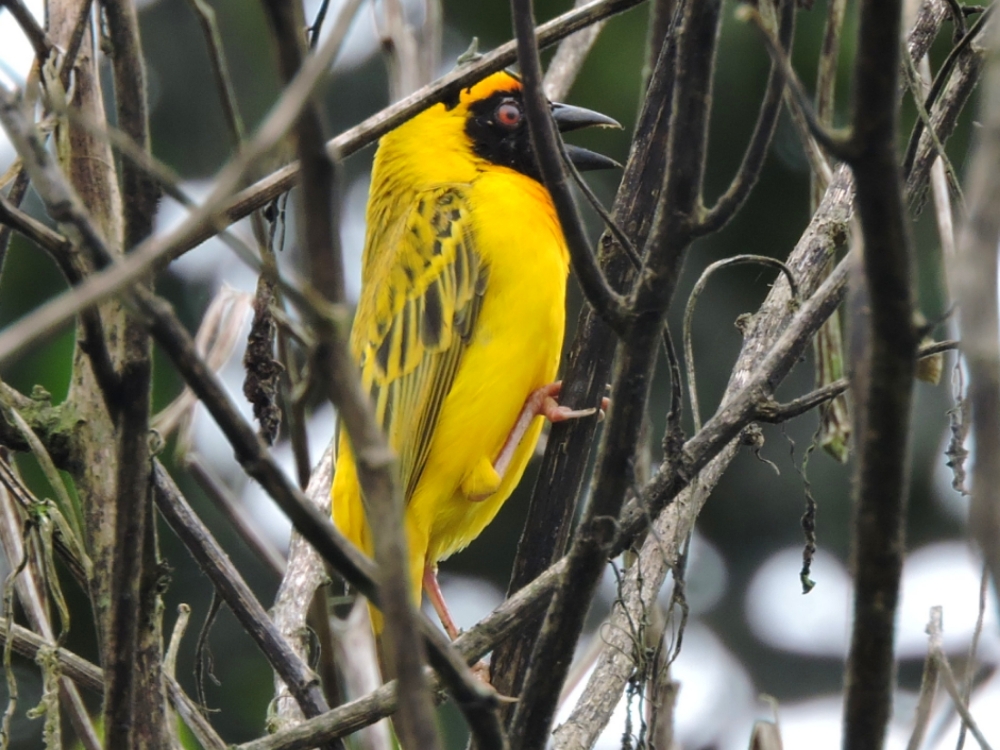
Two other Weavers are among the endemics. I saw São Tomé Weaver at close range several times but the photo I thought I had taken of one of them actually turned out to be a female of another species, so I am not able to provide an example here. Giant Weaver is more interesting, anyway, though this image does not adequately convey it giantness.
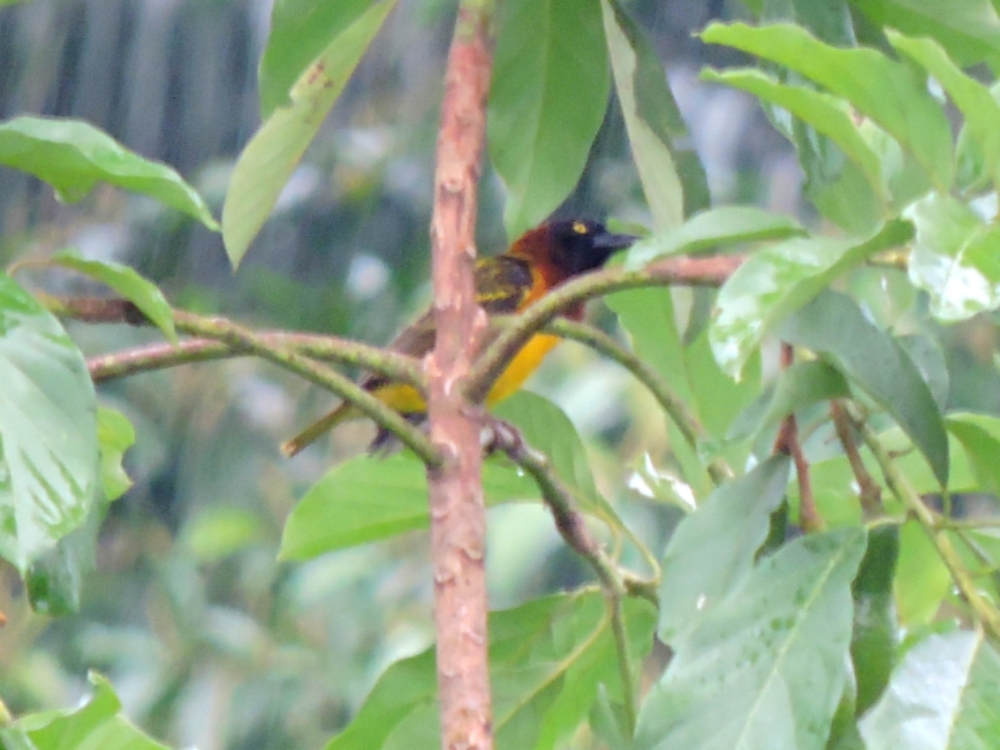
São Tome Prinia was one of the most commonly seen birds, but was still interesting, as it constantly makes a loud pop
noise by rapidly flicking its tail, similar to the sound made by some neotropical Manakins.
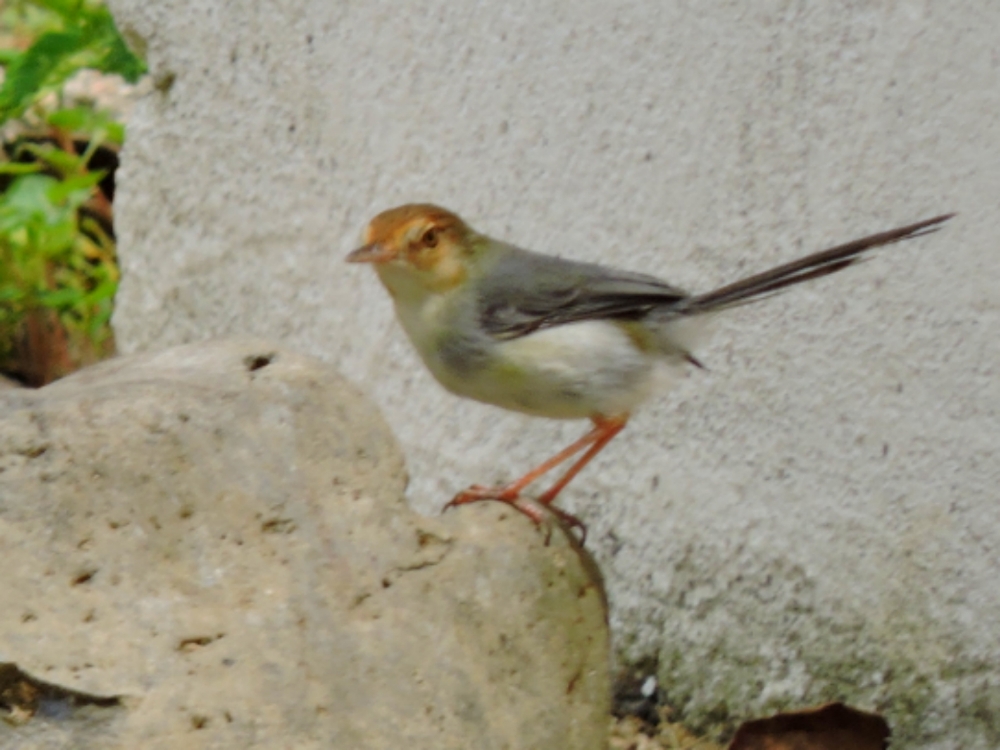
São Tomé Thrush was a fairly typical thrush, but nice to add anyway…
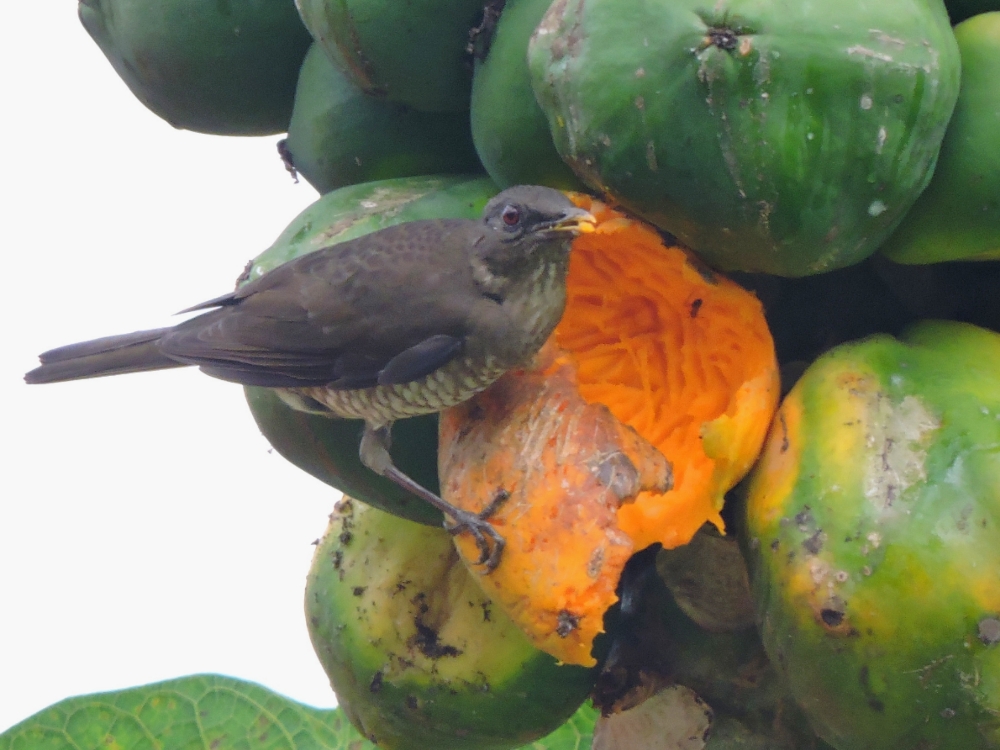
…while Black-Capped Speirops was a little more distinctive.
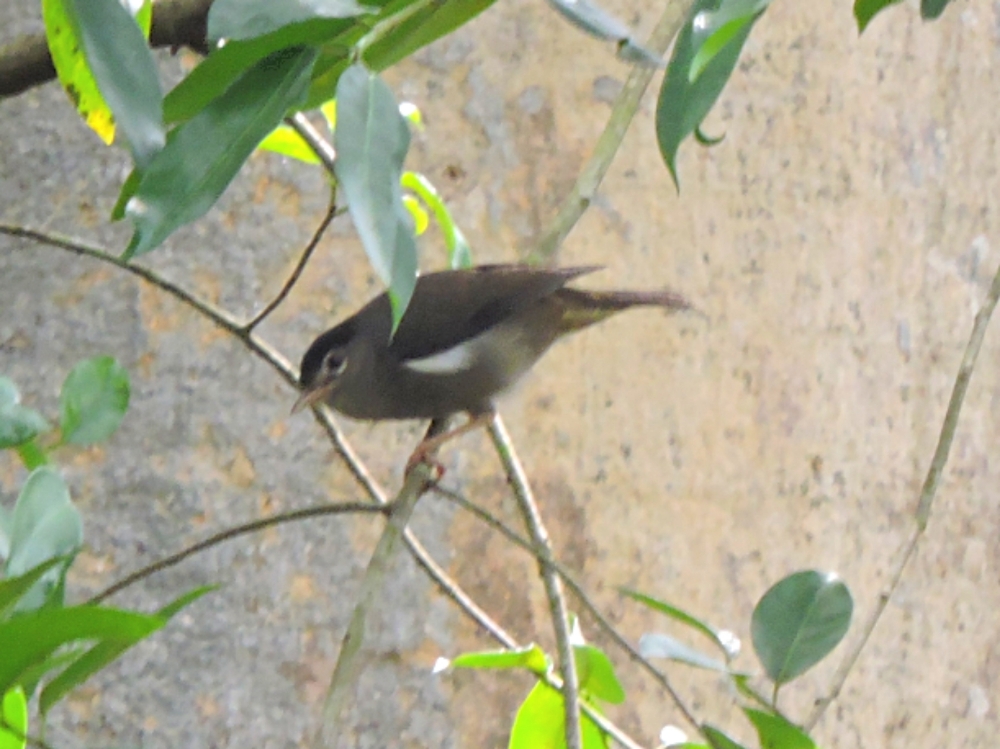
Newton’s Sunbird was probably the least interesting of the two local Sunbirds, but I will take it…
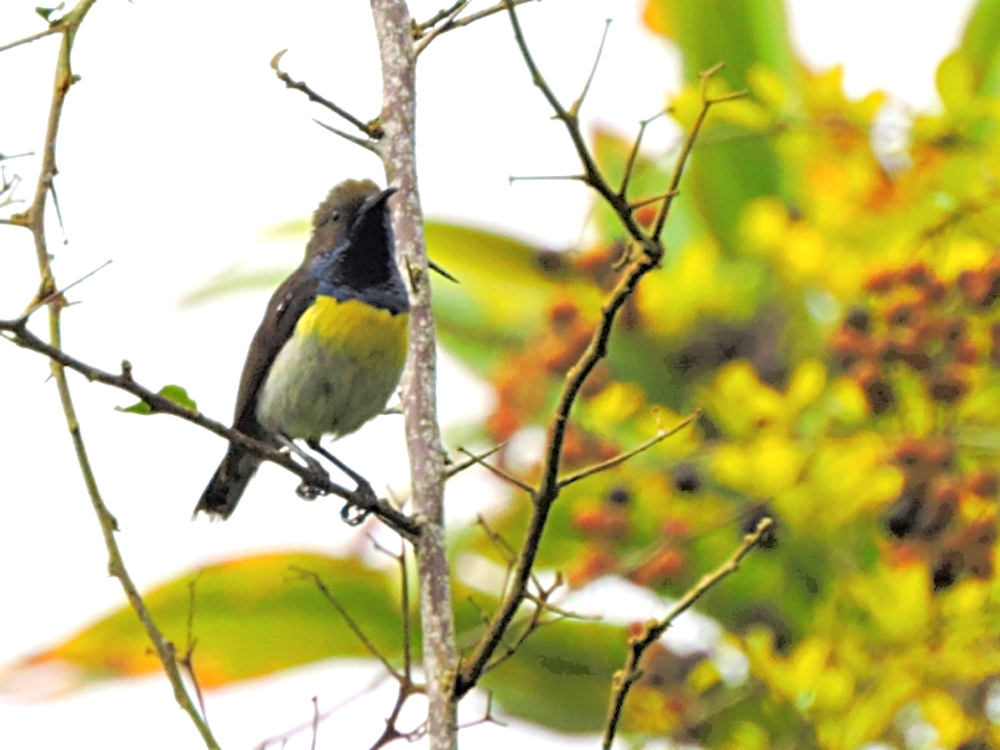
…and São Tomé Paradise-Flycatcher was a nice addition to my list of Monarchs.
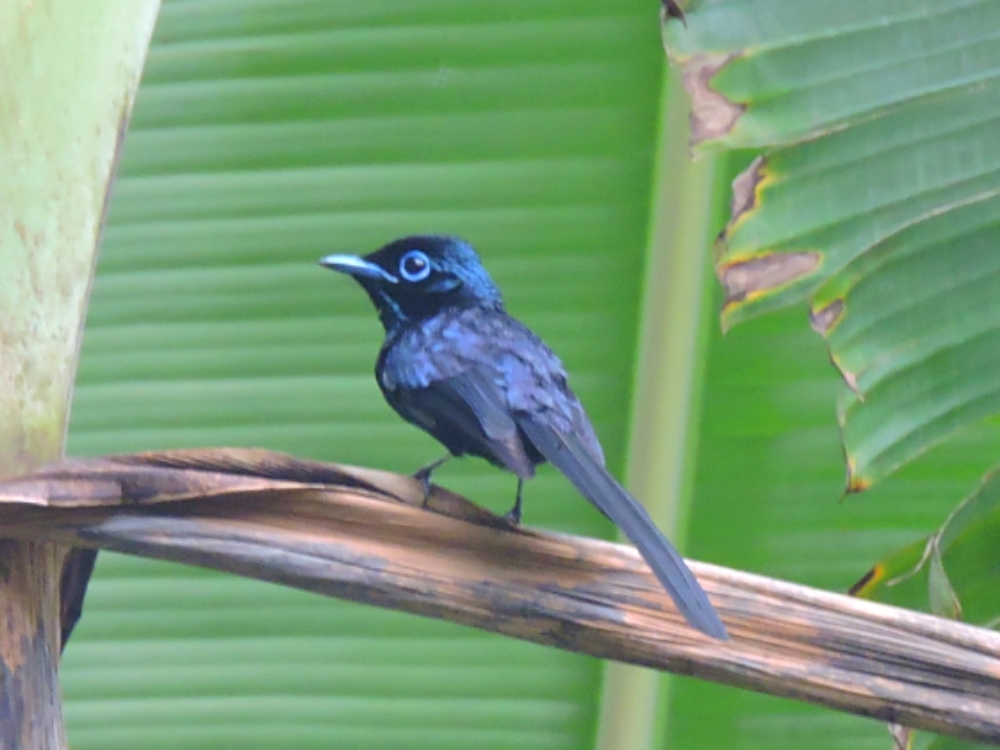
I also managed distant sightings of two of the three pigeons of the island, São Tomé Pigeon, and São Tomé Green-Pigeon, which is actually greener than it appears here.
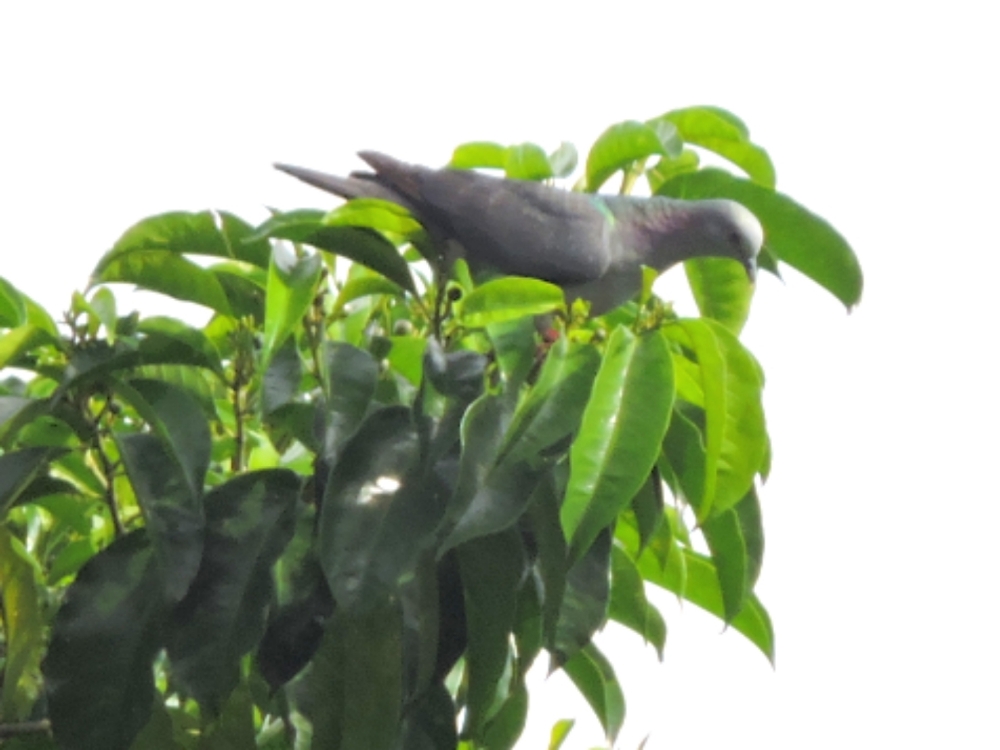
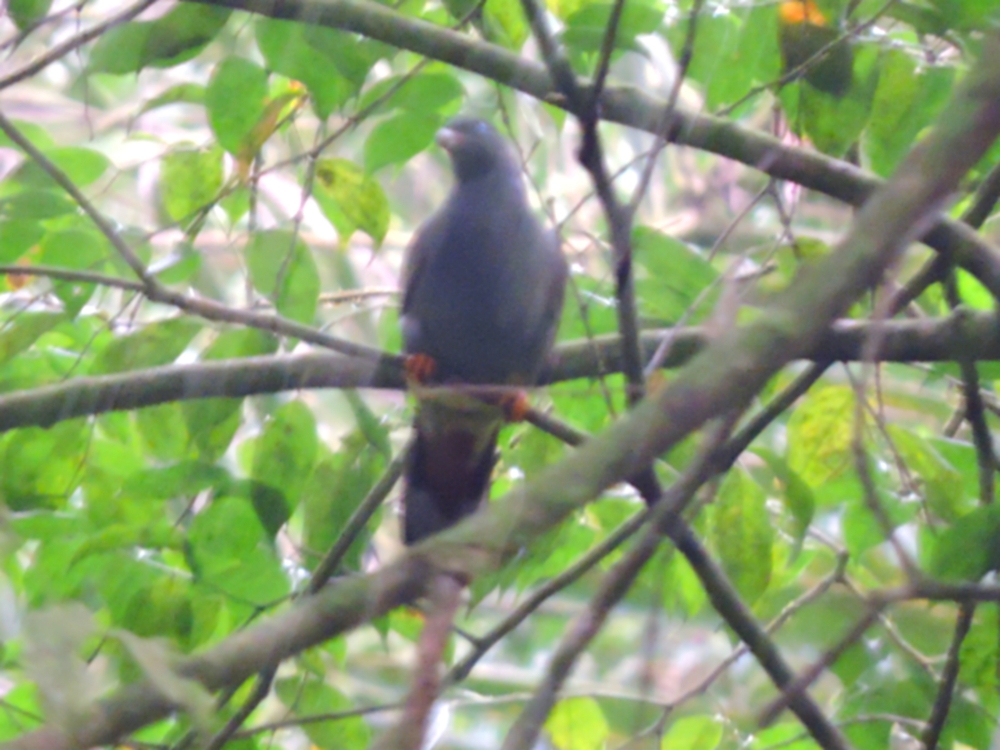
Another very nice bird was São Tomé Oriole.
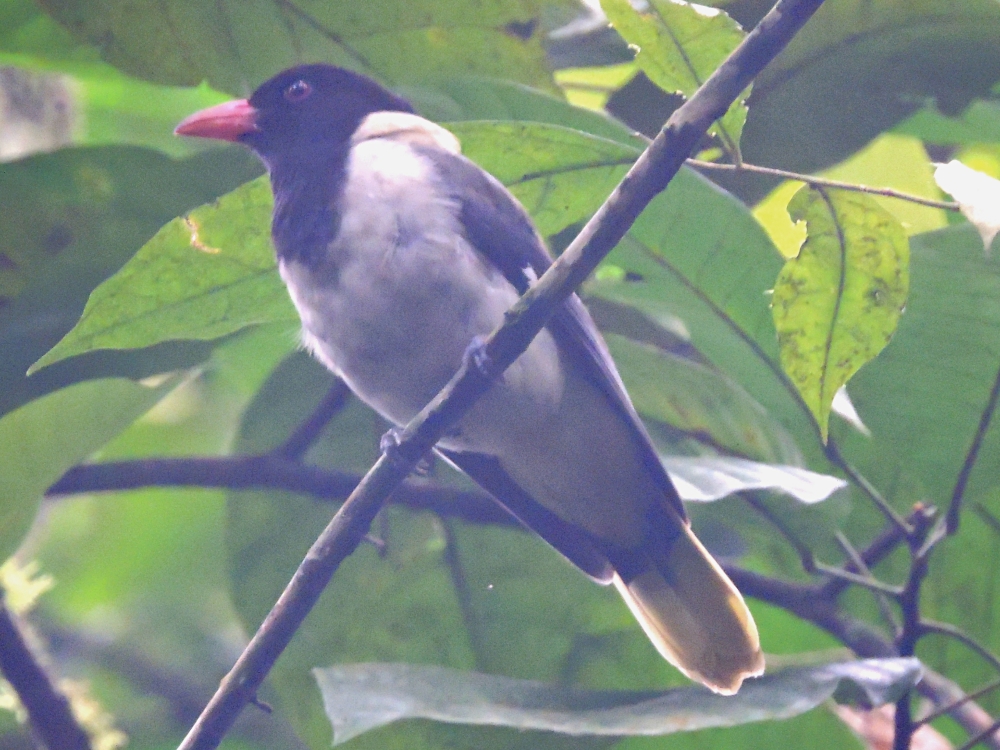
And a rather plain, but still pleasing, small bird was Principe Seedeater.
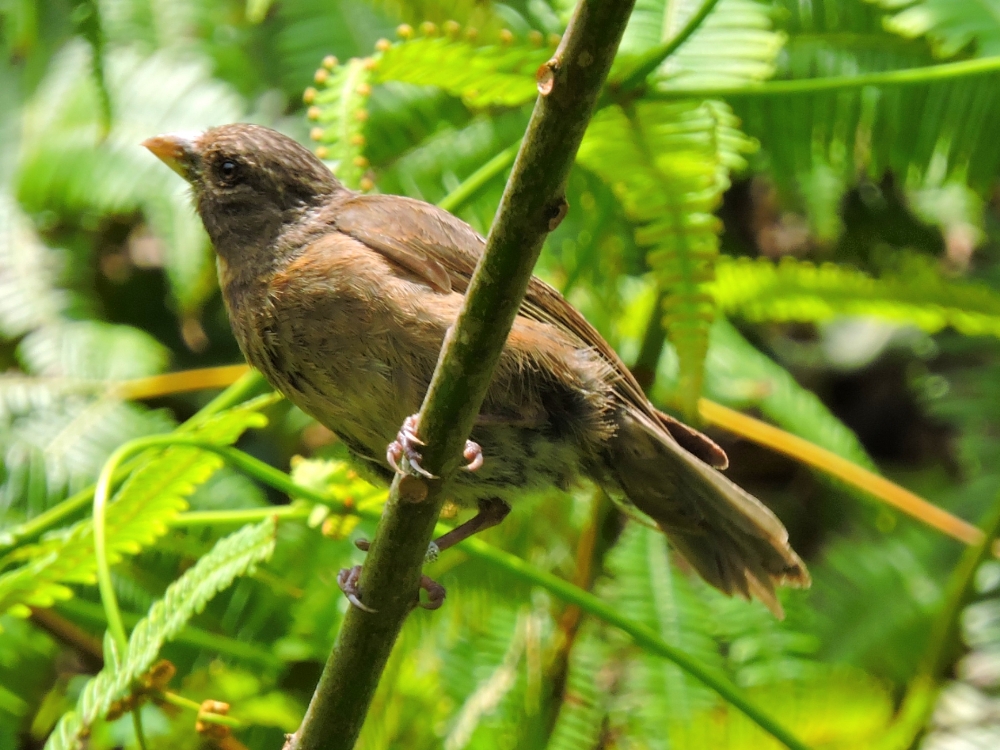
However, a bird with a similar appearance turned out to be much more interesting. As I was cycling up the final section of gravel road to Bom Sucesso, I approached three brown birds feedings in the roadway Frequently, birds like that turn out to something ordinary, such as the local Sparrow, or the very abundant Common Waxbill, so I debated in my mind about whether to stop, or not. I decided that I would, since they might have been more Principe Seedeaters. It is fortunate that I did, because when I examined the images later I discovered that they were much more interesting than that, São Tomé Grosbeak! That species is extremely rare, in fact, Wikipedia states that there are thought to be less than 50 individuals, all living in the southern rainforest However, I located a research paper that concluded that the species’ range is somewhat larger than originally assumed, and includes the area in which I saw them. I believe the birds I saw were probably young birds, since they seemed a little small for that species, but that didn’t bother me at all.
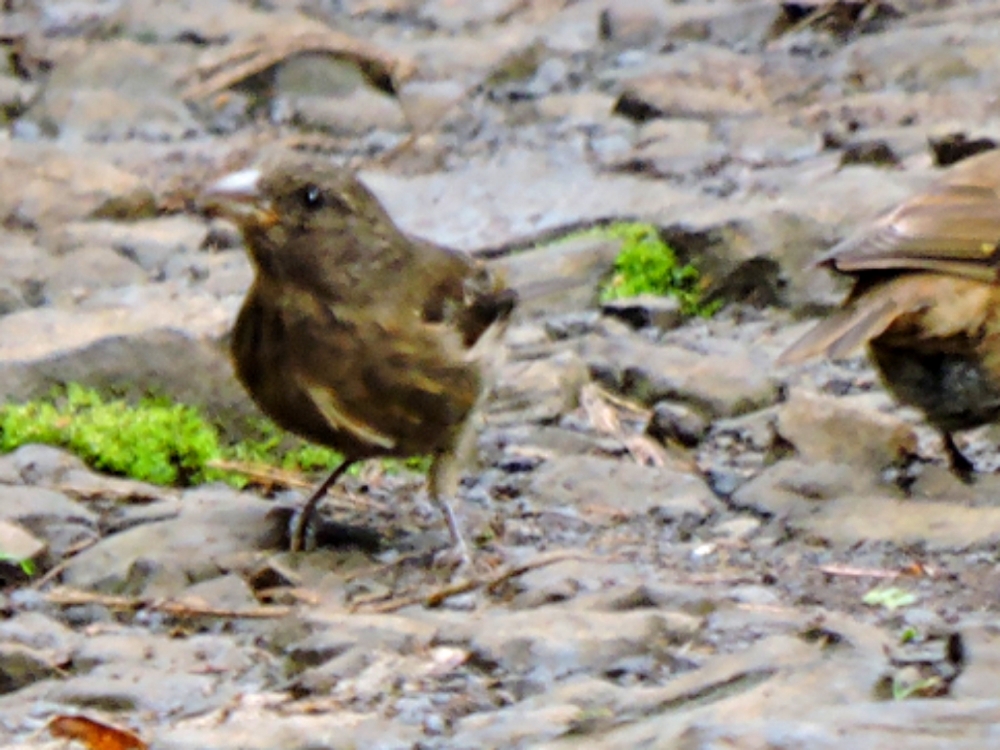
Certainly my favorite bird from the island was one that we saw in the forest of Obo National Park, and the final new bird of my visit. It was lucky for me that Laudino noticed it, because it is a stealthy bird, difficult to pick out among the leaves or groundcover, but I was pleased to see it because it is a rare member of one of my favorite groups, São Tomé Ibis! This observation was even more satisfying because once I achieved it my life list ticked over a nicely significant numeric milestone, one that I will mention again later. For now, that event has infused a shot of energy into my birding efforts, and the Ibis was the perfect bird to make that happen.
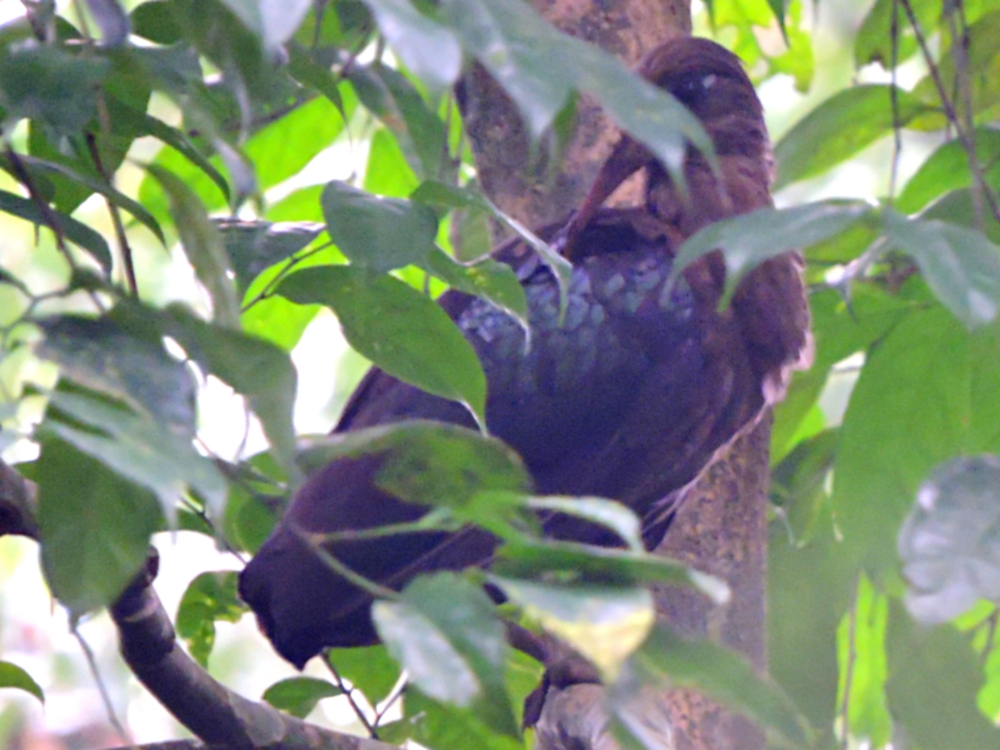
Overall, I feel quite satisfied with what I saw on São Tomé, especially given the difficult start that my visit had. Unique species such as these are always a very welcome addition to my list.